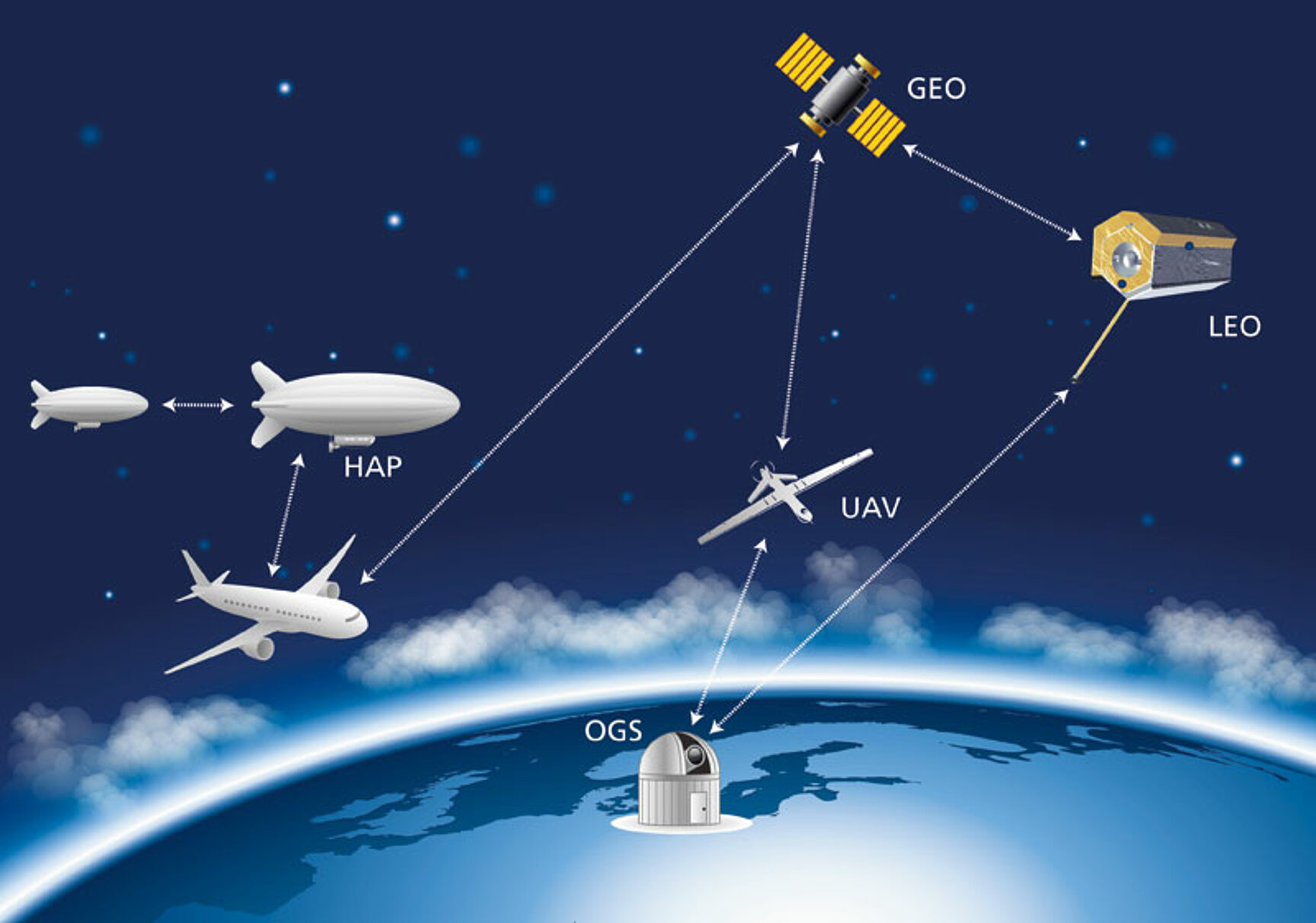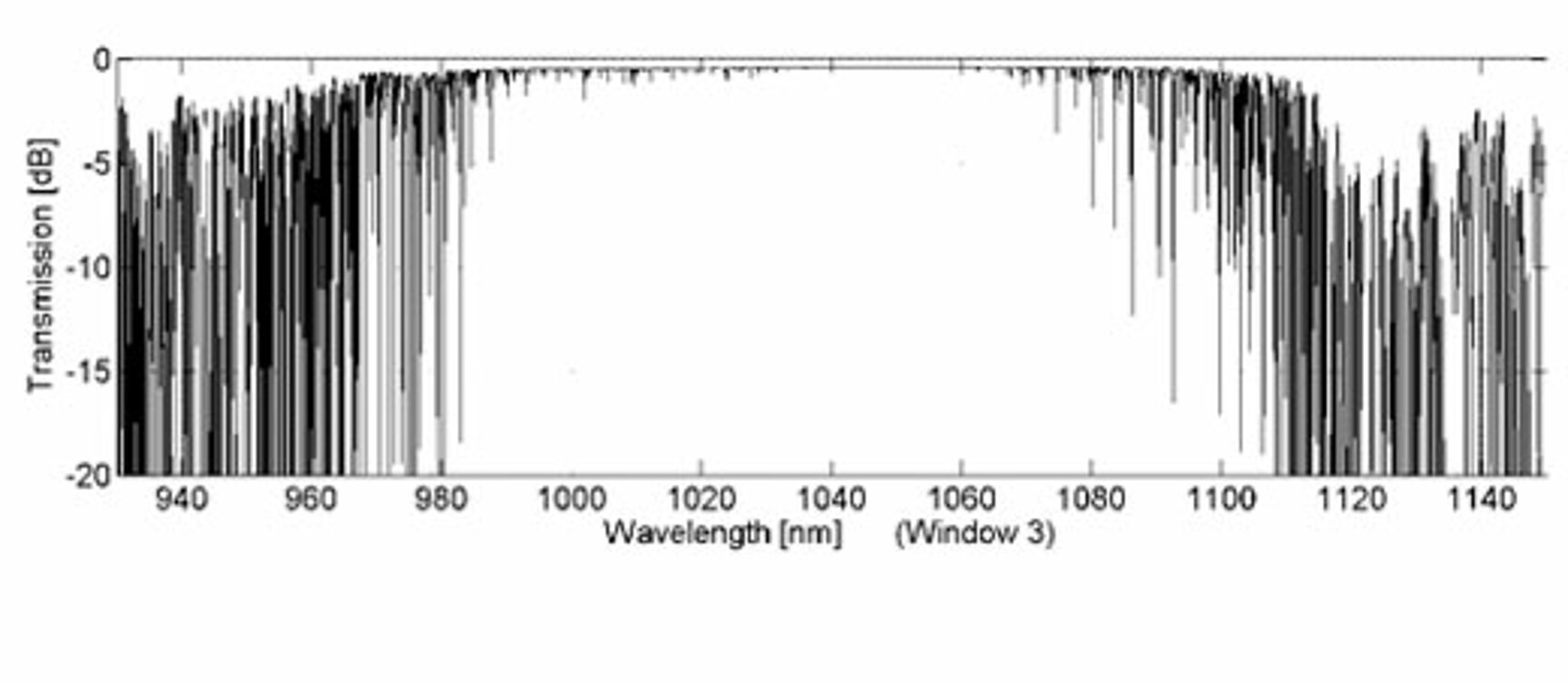Free-space optical (FSO) links over long distances have been made possible by the development of different key technologies in the near-infrared: high-power lasers, high-speed components, high-sensitivity detectors, cost-efficient optics. In space or through the atmosphere, FSO links increase the capacity (> 1 Gbit/s) and the accessibility (no required license for spectrum usage) of data transmissions. Design issues include atmospheric perturbations, beam tracking and high geometric losses. To face the current FSO challenges, the Fraunhofer Heinrich Hertz Institute (HHI) develops techniques to increase the link reliability and exploits its know-how on fiber-based terrestrial networks.
Advantages compared to radio links
- Larger bandwidth available
- Smaller terminals and lower power consumption
- No spectrum regulation
Application examples
- Downlinks from Earth-observation satellite
- Feeder link to telecommunication satellite in GEO orbit
- Satellite and aircraft communications
- Quantum key distribution from space
Challenges
- Mitigation of atmospheric impairments (cloud, turbulence)
- Supply of the very high data rates of fiber communications
Expertise of Fraunhofer HHI
- Design and fabrication of 1550-nm components
- Numerical optimization of transmitters and receivers (including optical amplifiers)
- Design of WDM (wavelength multiplexing) transmissions
- Design of atmospheric mitigation techniques (spatial diversity, adaptive systems)
- Experimental validation of the whole design

